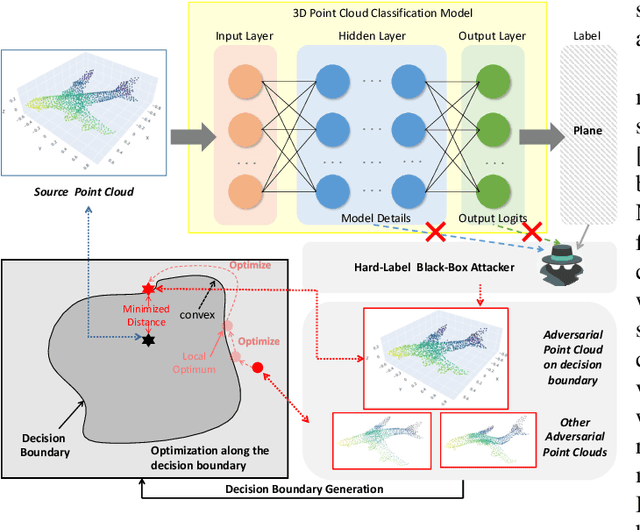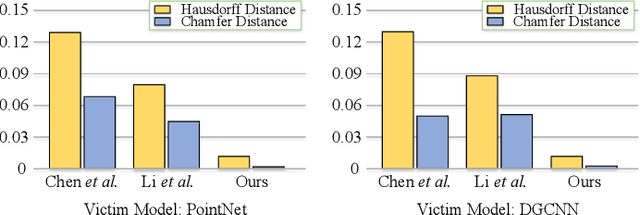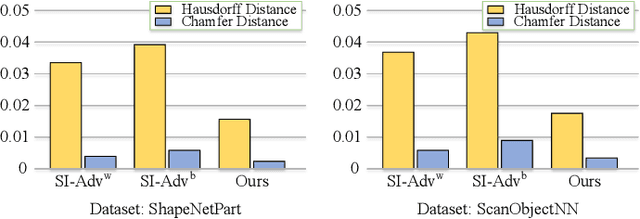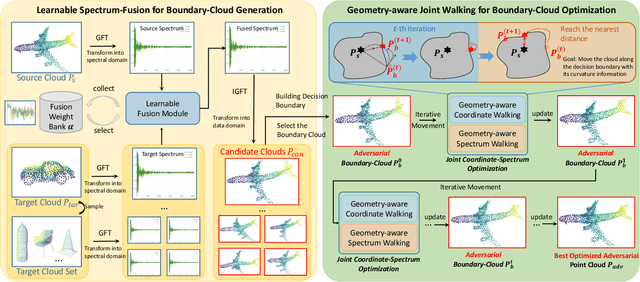Daizong Liu
Wangxuan Institute of Computer Technology, Peking University
Learning from Few Samples: A Novel Approach for High-Quality Malcode Generation
Aug 25, 2025Abstract:Intrusion Detection Systems (IDS) play a crucial role in network security defense. However, a significant challenge for IDS in training detection models is the shortage of adequately labeled malicious samples. To address these issues, this paper introduces a novel semi-supervised framework \textbf{GANGRL-LLM}, which integrates Generative Adversarial Networks (GANs) with Large Language Models (LLMs) to enhance malicious code generation and SQL Injection (SQLi) detection capabilities in few-sample learning scenarios. Specifically, our framework adopts a collaborative training paradigm where: (1) the GAN-based discriminator improves malicious pattern recognition through adversarial learning with generated samples and limited real samples; and (2) the LLM-based generator refines the quality of malicious code synthesis using reward signals from the discriminator. The experimental results demonstrate that even with a limited number of labeled samples, our training framework is highly effective in enhancing both malicious code generation and detection capabilities. This dual enhancement capability offers a promising solution for developing adaptive defense systems capable of countering evolving cyber threats.
A Survey of Efficient Reasoning for Large Reasoning Models: Language, Multimodality, and Beyond
Mar 27, 2025Abstract:Recent Large Reasoning Models (LRMs), such as DeepSeek-R1 and OpenAI o1, have demonstrated strong performance gains by scaling up the length of Chain-of-Thought (CoT) reasoning during inference. However, a growing concern lies in their tendency to produce excessively long reasoning traces, which are often filled with redundant content (e.g., repeated definitions), over-analysis of simple problems, and superficial exploration of multiple reasoning paths for harder tasks. This inefficiency introduces significant challenges for training, inference, and real-world deployment (e.g., in agent-based systems), where token economy is critical. In this survey, we provide a comprehensive overview of recent efforts aimed at improving reasoning efficiency in LRMs, with a particular focus on the unique challenges that arise in this new paradigm. We identify common patterns of inefficiency, examine methods proposed across the LRM lifecycle, i.e., from pretraining to inference, and discuss promising future directions for research. To support ongoing development, we also maintain a real-time GitHub repository tracking recent progress in the field. We hope this survey serves as a foundation for further exploration and inspires innovation in this rapidly evolving area.
Cognitive Disentanglement for Referring Multi-Object Tracking
Mar 14, 2025Abstract:As a significant application of multi-source information fusion in intelligent transportation perception systems, Referring Multi-Object Tracking (RMOT) involves localizing and tracking specific objects in video sequences based on language references. However, existing RMOT approaches often treat language descriptions as holistic embeddings and struggle to effectively integrate the rich semantic information contained in language expressions with visual features. This limitation is especially apparent in complex scenes requiring comprehensive understanding of both static object attributes and spatial motion information. In this paper, we propose a Cognitive Disentanglement for Referring Multi-Object Tracking (CDRMT) framework that addresses these challenges. It adapts the "what" and "where" pathways from human visual processing system to RMOT tasks. Specifically, our framework comprises three collaborative components: (1)The Bidirectional Interactive Fusion module first establishes cross-modal connections while preserving modality-specific characteristics; (2) Building upon this foundation, the Progressive Semantic-Decoupled Query Learning mechanism hierarchically injects complementary information into object queries, progressively refining object understanding from coarse to fine-grained semantic levels; (3) Finally, the Structural Consensus Constraint enforces bidirectional semantic consistency between visual features and language descriptions, ensuring that tracked objects faithfully reflect the referring expression. Extensive experiments on different benchmark datasets demonstrate that CDRMT achieves substantial improvements over state-of-the-art methods, with average gains of 6.0% in HOTA score on Refer-KITTI and 3.2% on Refer-KITTI-V2. Our approach advances the state-of-the-art in RMOT while simultaneously providing new insights into multi-source information fusion.
Talk2PC: Enhancing 3D Visual Grounding through LiDAR and Radar Point Clouds Fusion for Autonomous Driving
Mar 11, 2025Abstract:Embodied outdoor scene understanding forms the foundation for autonomous agents to perceive, analyze, and react to dynamic driving environments. However, existing 3D understanding is predominantly based on 2D Vision-Language Models (VLMs), collecting and processing limited scene-aware contexts. Instead, compared to the 2D planar visual information, point cloud sensors like LiDAR offer rich depth information and fine-grained 3D representations of objects. Meanwhile, the emerging 4D millimeter-wave (mmWave) radar is capable of detecting the motion trend, velocity, and reflection intensity of each object. Therefore, the integration of these two modalities provides more flexible querying conditions for natural language, enabling more accurate 3D visual grounding. To this end, in this paper, we exploratively propose a novel method called TPCNet, the first outdoor 3D visual grounding model upon the paradigm of prompt-guided point cloud sensor combination, including both LiDAR and radar contexts. To adaptively balance the features of these two sensors required by the prompt, we have designed a multi-fusion paradigm called Two-Stage Heterogeneous Modal Adaptive Fusion. Specifically, this paradigm initially employs Bidirectional Agent Cross-Attention (BACA), which feeds dual-sensor features, characterized by global receptive fields, to the text features for querying. Additionally, we have designed a Dynamic Gated Graph Fusion (DGGF) module to locate the regions of interest identified by the queries. To further enhance accuracy, we innovatively devise an C3D-RECHead, based on the nearest object edge. Our experiments have demonstrated that our TPCNet, along with its individual modules, achieves the state-of-the-art performance on both the Talk2Radar and Talk2Car datasets.
Multi-Pair Temporal Sentence Grounding via Multi-Thread Knowledge Transfer Network
Dec 20, 2024



Abstract:Given some video-query pairs with untrimmed videos and sentence queries, temporal sentence grounding (TSG) aims to locate query-relevant segments in these videos. Although previous respectable TSG methods have achieved remarkable success, they train each video-query pair separately and ignore the relationship between different pairs. We observe that the similar video/query content not only helps the TSG model better understand and generalize the cross-modal representation but also assists the model in locating some complex video-query pairs. Previous methods follow a single-thread framework that cannot co-train different pairs and usually spends much time re-obtaining redundant knowledge, limiting their real-world applications. To this end, in this paper, we pose a brand-new setting: Multi-Pair TSG, which aims to co-train these pairs. In particular, we propose a novel video-query co-training approach, Multi-Thread Knowledge Transfer Network, to locate a variety of video-query pairs effectively and efficiently. Firstly, we mine the spatial and temporal semantics across different queries to cooperate with each other. To learn intra- and inter-modal representations simultaneously, we design a cross-modal contrast module to explore the semantic consistency by a self-supervised strategy. To fully align visual and textual representations between different pairs, we design a prototype alignment strategy to 1) match object prototypes and phrase prototypes for spatial alignment, and 2) align activity prototypes and sentence prototypes for temporal alignment. Finally, we develop an adaptive negative selection module to adaptively generate a threshold for cross-modal matching. Extensive experiments show the effectiveness and efficiency of our proposed method.
Improving the Transferability of 3D Point Cloud Attack via Spectral-aware Admix and Optimization Designs
Dec 17, 2024Abstract:Deep learning models for point clouds have shown to be vulnerable to adversarial attacks, which have received increasing attention in various safety-critical applications such as autonomous driving, robotics, and surveillance. Existing 3D attackers generally design various attack strategies in the white-box setting, requiring the prior knowledge of 3D model details. However, real-world 3D applications are in the black-box setting, where we can only acquire the outputs of the target classifier. Although few recent works try to explore the black-box attack, they still achieve limited attack success rates (ASR). To alleviate this issue, this paper focuses on attacking the 3D models in a transfer-based black-box setting, where we first carefully design adversarial examples in a white-box surrogate model and then transfer them to attack other black-box victim models. Specifically, we propose a novel Spectral-aware Admix with Augmented Optimization method (SAAO) to improve the adversarial transferability. In particular, since traditional Admix strategy are deployed in the 2D domain that adds pixel-wise images for perturbing, we can not directly follow it to merge point clouds in coordinate domain as it will destroy the geometric shapes. Therefore, we design spectral-aware fusion that performs Graph Fourier Transform (GFT) to get spectral features of the point clouds and add them in the spectral domain. Afterward, we run a few steps with spectral-aware weighted Admix to select better optimization paths as well as to adjust corresponding learning weights. At last, we run more steps to generate adversarial spectral feature along the optimization path and perform Inverse-GFT on the adversarial spectral feature to obtain the adversarial example in the data domain. Experiments show that our SAAO achieves better transferability compared to existing 3D attack methods.
Hard-Label Black-Box Attacks on 3D Point Clouds
Nov 30, 2024



Abstract:With the maturity of depth sensors in various 3D safety-critical applications, 3D point cloud models have been shown to be vulnerable to adversarial attacks. Almost all existing 3D attackers simply follow the white-box or black-box setting to iteratively update coordinate perturbations based on back-propagated or estimated gradients. However, these methods are hard to deploy in real-world scenarios (no model details are provided) as they severely rely on parameters or output logits of victim models. To this end, we propose point cloud attacks from a more practical setting, i.e., hard-label black-box attack, in which attackers can only access the prediction label of 3D input. We introduce a novel 3D attack method based on a new spectrum-aware decision boundary algorithm to generate high-quality adversarial samples. In particular, we first construct a class-aware model decision boundary, by developing a learnable spectrum-fusion strategy to adaptively fuse point clouds of different classes in the spectral domain, aiming to craft their intermediate samples without distorting the original geometry. Then, we devise an iterative coordinate-spectrum optimization method with curvature-aware boundary search to move the intermediate sample along the decision boundary for generating adversarial point clouds with trivial perturbations. Experiments demonstrate that our attack competitively outperforms existing white/black-box attackers in terms of attack performance and adversary quality.
Joint Top-Down and Bottom-Up Frameworks for 3D Visual Grounding
Oct 21, 2024



Abstract:This paper tackles the challenging task of 3D visual grounding-locating a specific object in a 3D point cloud scene based on text descriptions. Existing methods fall into two categories: top-down and bottom-up methods. Top-down methods rely on a pre-trained 3D detector to generate and select the best bounding box, resulting in time-consuming processes. Bottom-up methods directly regress object bounding boxes with coarse-grained features, producing worse results. To combine their strengths while addressing their limitations, we propose a joint top-down and bottom-up framework, aiming to enhance the performance while improving the efficiency. Specifically, in the first stage, we propose a bottom-up based proposal generation module, which utilizes lightweight neural layers to efficiently regress and cluster several coarse object proposals instead of using a complex 3D detector. Then, in the second stage, we introduce a top-down based proposal consolidation module, which utilizes graph design to effectively aggregate and propagate the query-related object contexts among the generated proposals for further refinement. By jointly training these two modules, we can avoid the inherent drawbacks of the complex proposals in the top-down framework and the coarse proposals in the bottom-up framework. Experimental results on the ScanRefer benchmark show that our framework is able to achieve the state-of-the-art performance.
A Survey of Attacks on Large Vision-Language Models: Resources, Advances, and Future Trends
Jul 10, 2024



Abstract:With the significant development of large models in recent years, Large Vision-Language Models (LVLMs) have demonstrated remarkable capabilities across a wide range of multimodal understanding and reasoning tasks. Compared to traditional Large Language Models (LLMs), LVLMs present great potential and challenges due to its closer proximity to the multi-resource real-world applications and the complexity of multi-modal processing. However, the vulnerability of LVLMs is relatively underexplored, posing potential security risks in daily usage. In this paper, we provide a comprehensive review of the various forms of existing LVLM attacks. Specifically, we first introduce the background of attacks targeting LVLMs, including the attack preliminary, attack challenges, and attack resources. Then, we systematically review the development of LVLM attack methods, such as adversarial attacks that manipulate model outputs, jailbreak attacks that exploit model vulnerabilities for unauthorized actions, prompt injection attacks that engineer the prompt type and pattern, and data poisoning that affects model training. Finally, we discuss promising research directions in the future. We believe that our survey provides insights into the current landscape of LVLM vulnerabilities, inspiring more researchers to explore and mitigate potential safety issues in LVLM developments. The latest papers on LVLM attacks are continuously collected in https://github.com/liudaizong/Awesome-LVLM-Attack.
A Survey on Text-guided 3D Visual Grounding: Elements, Recent Advances, and Future Directions
Jun 09, 2024



Abstract:Text-guided 3D visual grounding (T-3DVG), which aims to locate a specific object that semantically corresponds to a language query from a complicated 3D scene, has drawn increasing attention in the 3D research community over the past few years. Compared to 2D visual grounding, this task presents great potential and challenges due to its closer proximity to the real world and the complexity of data collection and 3D point cloud source processing. In this survey, we attempt to provide a comprehensive overview of the T-3DVG progress, including its fundamental elements, recent research advances, and future research directions. To the best of our knowledge, this is the first systematic survey on the T-3DVG task. Specifically, we first provide a general structure of the T-3DVG pipeline with detailed components in a tutorial style, presenting a complete background overview. Then, we summarize the existing T-3DVG approaches into different categories and analyze their strengths and weaknesses. We also present the benchmark datasets and evaluation metrics to assess their performances. Finally, we discuss the potential limitations of existing T-3DVG and share some insights on several promising research directions. The latest papers are continually collected at https://github.com/liudaizong/Awesome-3D-Visual-Grounding.
 Add to Chrome
Add to Chrome Add to Firefox
Add to Firefox Add to Edge
Add to Edge